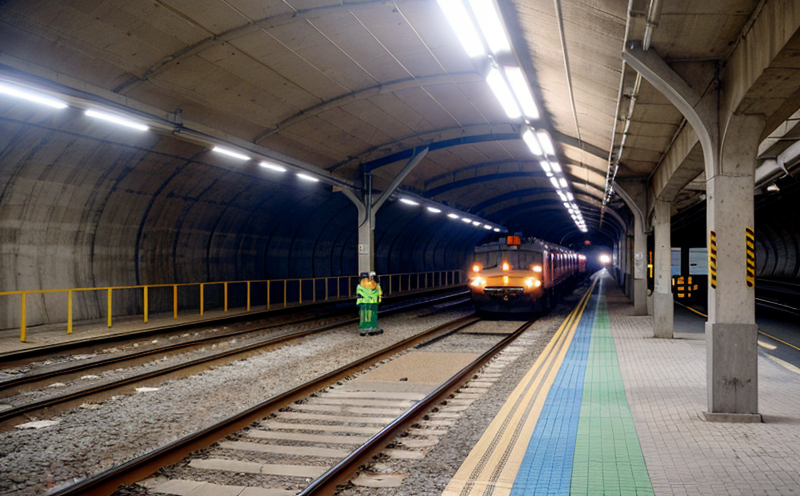EN 1991 Wind Load Resistance Testing of Bridge Structures
The European standard EN 1991-1-4 provides a comprehensive framework for the design and assessment of wind load resistance in bridge structures. This service focuses on testing these structures to ensure they can withstand the rigors of environmental conditions, particularly high winds, which are critical for safety and durability.
The standard is widely recognized as an essential tool in ensuring that bridges comply with the highest safety standards. It covers various aspects including design methods, load cases, and validation techniques. For our clients who require a robust wind load resistance test, we employ state-of-the-art equipment and methodologies to simulate real-world conditions accurately.
Our testing process begins with thorough specimen preparation, ensuring that the structure is in its original condition before applying controlled environmental stressors. Our team of experts meticulously calibrates instrumentation to ensure precise measurements during the tests. Once the initial setup is complete, we apply wind loads gradually, monitoring structural behavior under increasing pressure until either failure or safe operation is confirmed.
Our testing facilities are equipped with sophisticated software and hardware that allow us to replicate diverse environmental conditions, including varying wind speeds and directions. This ensures that our clients receive accurate results that can be used for further analysis or compliance purposes. The data collected from these tests forms the basis of detailed reports tailored to meet specific client needs.
In addition to standard compliance testing, we also offer custom solutions where required by the industry. Our team works closely with clients to understand their unique requirements and develop bespoke test protocols if necessary. This flexibility ensures that our services remain relevant across different sectors within railway and transportation infrastructure.
Applied Standards
| Standard | Description |
|---|---|
| EN 1991-1-4 | European Standard for the design of structures subject to wind loads. |
Industry Applications
The application of EN 1991-1-4 is crucial in various sectors including railway and transportation, where bridge structures play a vital role. By ensuring compliance with this standard, engineers can design safer and more resilient bridges capable of withstanding extreme weather conditions.
This testing process not only helps in meeting regulatory requirements but also enhances public confidence by demonstrating commitment to safety standards. For instance, in railway infrastructure projects, accurate wind load resistance tests ensure that bridges remain stable even during storms or hurricanes, safeguarding both passengers and freight transport.
Why Choose This Test
The importance of EN 1991-1-4 cannot be overstated. By choosing this service, clients benefit from expert knowledge and cutting-edge facilities that guarantee accurate results every time. Our comprehensive approach ensures that all aspects related to wind load resistance are thoroughly evaluated.
Moreover, our team provides detailed reports that not only meet regulatory requirements but also offer valuable insights into potential areas of improvement. This service is particularly beneficial for quality managers and compliance officers looking to ensure their projects adhere strictly to international standards while maintaining the highest levels of safety and reliability.





